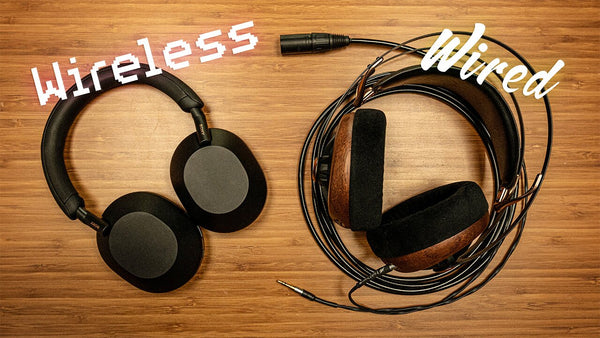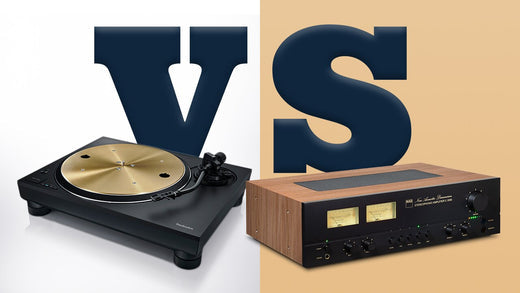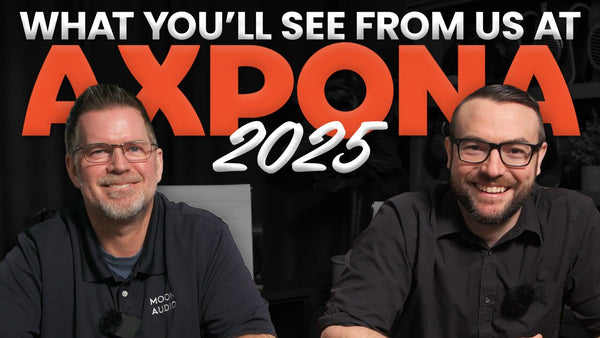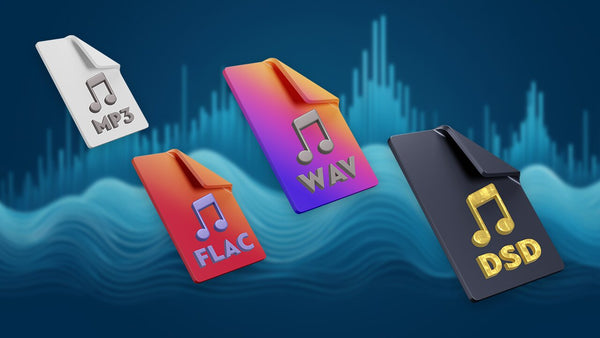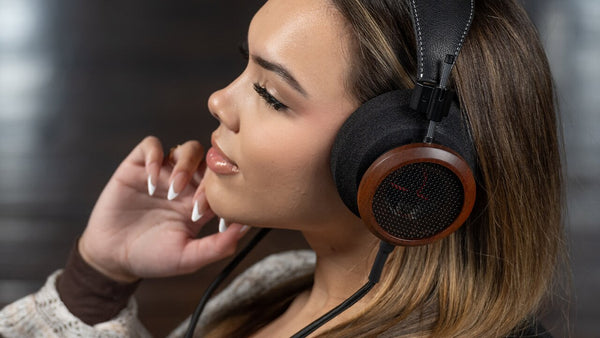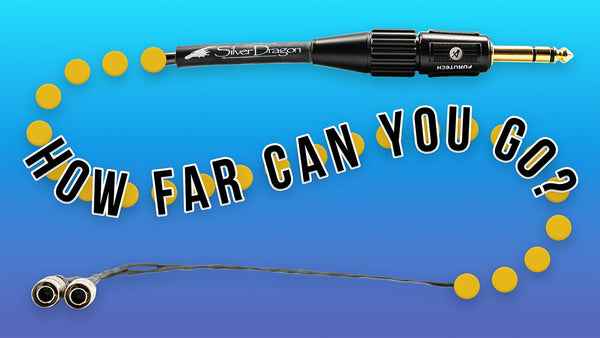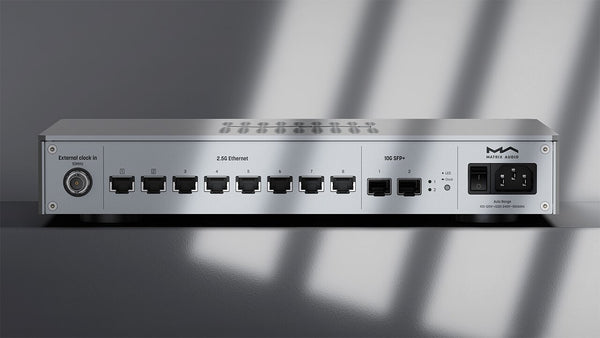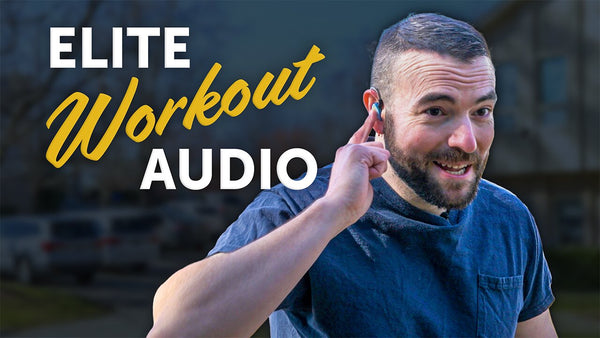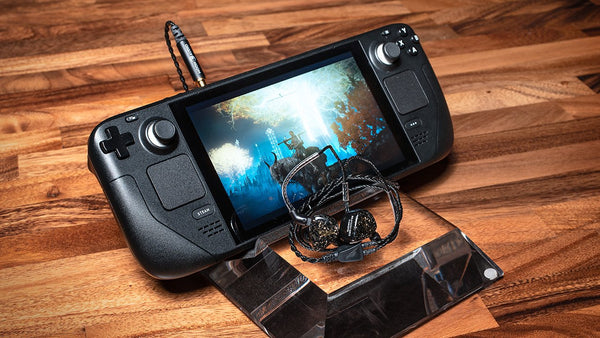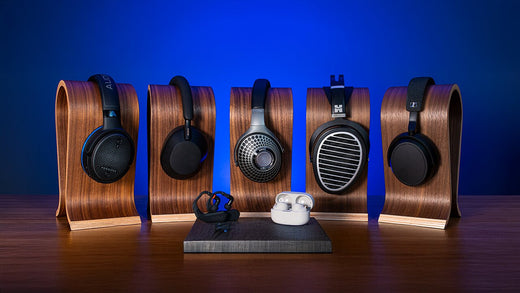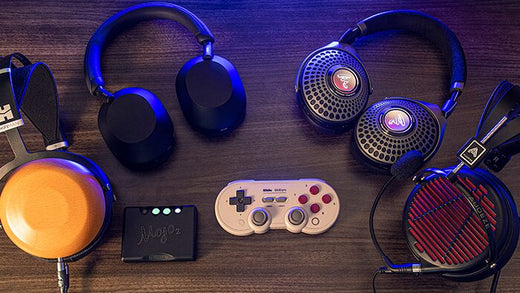The new Sony Walkman is here! The new Sony Walkman is here! It's understandable if you don't know which one I'm referring to, because there have been a few releases during the past several months: the WM1AM2, the WM1ZM2, the soon-to-be-released A306 ... But this review is all about the new Z-series Walkman, the ZX707, which has an MSRP of $898. I reviewed the ZX507 a couple of years ago and was in love with the sound, form factor, and effortless portability. So I was really curious to get my hands on the ZX707 and to see how it compares not only to its predecessor, but to the WM1AM2, which costs about $500 more. Let's get into it! Oh, and stay tuned, because we're going to have a blog on the evolution of the Walkman, where you can learn about all of these models and more.
Sony NW-ZX707 Walkman Music Player Review

Sony DAP Comparison: NW-ZX707 vs. NW-WM1AM2
PROS:
- Larger screen vs. ZX507
- Better battery life-up to 25 hours!
- Sleek, stylish, and sophisticated
- >Big, rich, lively sound with playback up to 384kHz/32-bit
CONS:
- Potential Android security issue
- Case not included
Materials & Quality
It's easy to spot the differences in appearance between the ZX707 and the ZX507. The rounded design and silver body of the former has been updated to straight edges and a black chassis. The ZX707 has also grown in size and weight. At 8 ounces, the ZX707 weighs 2.2 ounces more than its predecessor. It also has a bigger screen (5 inches vs. 3.6 inches) and a larger overall body.
Just reading about the increase in dimensions and weight, I thought the ZX707 was going to seem bigger and heavier than it is. The truth is, a 2-ounce increase doesn't make a whole lot of difference in the weight, and the device really doesn't seem that big. Yes, it's bigger than the ZX507, but it's smaller and lighter than my iPhone.
The body is made from milled aluminum. A rubberized material covers the rear of the unit, which provides good grip. For inputs and outputs, the ZX707 has a stereo mini jack and balanced standard jack for headphones, a USB-C port for charging and music file transfer, and a microSD card slot.
Control buttons are on the right side of the player and include power, volume up and down, and playback buttons. There is also a hold button, which when enabled prevents controls from being activated while the device is in your bag or pocket.
Internally, the ZX707 shares some features with the higher-priced NW-WM1AM2 and NW-WM1ZM2. For example, all of the bypass capacitors in the audio block are the latest generation FT CAP3 high-polymer capacitors. Sony says that this helps to create a smoother, more expressive sound with a wider soundstage, more transparency, and deeper bass. Another example is that each component in the ZX707 is mounted using high-quality solder containing gold, which Sony says lends width and height to the sound and increases transparency. Finally, the ZX707 uses the same high-capacity solid polymer capacitor as its bigger siblings. You'll notice that the rear of the player is slightly raised; that is to accommodate the capacitor.
Sony ZX707: A New Look and Feel vs. the Sony ZX507
Sony ZX707
- Color: Black
- Screen: 5 inches
- Weight: 227g (8oz)
- Dimensions: 72.5 x 132.3 x 16.9mm (2.9 x 5.2 x .67 in.)
- Playback: Up to 25 hours
- Upscaling: DSEE Ultimate
- Charging time: 3.5 hours
- USB DAC mode: Yes
- Android version: 12
- Bluetooth: version 5.0
Sony ZX507
- Color: Silver
- Screen: 3.6 inches
- Weight: 164g (5.8oz)
- Dimensions: 57.9 x 122.6 x 14.8mm (2.27 x 4.8 x .58 in.)
- Playback: Up to 20 hours
- Upscaling: DSEE HX
- Charging time: 6.5 hours
- USB DAC mode: No
- Android version: 9.0
- Bluetooth: version 5.0
Sound Quality
It's not hard to hear the signature Sony sound in the ZX707. If you know, you know. And it you don't, you're in for a treat. The ZX-707 sounds warm, musical, clear, and lively. It's the type of sound that takes you by the hand and leads you straight into the music, so you feel fully engaged. I hear plenty of detail in my favorite tracks, but there's a smoothness to the sound. "Detailed" and "smooth" might seem contradictory, but they coexist quite nicely in the ZX707.
Bass on the ZX707 is warm and generously punchy. Drum hits feel dimensional, and bass guitars sound deep and rich, especially on a soulful groove like Ben Harper's "In the Colors." I love being able to track bass lines while effortlessly following the rest of the instrumentation without feeling like the bass dominates.
Moving up the audio spectrum, I enjoy the tonality of instruments in the midrange, and vocals are pleasingly rich and emotive. The highs do their job without being piercing or harsh. The wailing sax in Credence Clearwater Revival's "Long As I Can See the Light" sounds satisfying without hurting my ears.
My favorite music to listen to with the ZX707 is classic rock, pop, classical, and jazz/soul. While streaming tracks on Qobuz, I ended up letting some random music play, including a song called "Stop This Flame" by Celeste. This was perfect for the Sony sound. Her Adele-esque voice sounds wonderfully textured and breathy, while the warmth of the Sony is a good match for the jazzy/soulful nature of this track.
"Stay With Me" by Faces is a winner on the ZX707. The super-punchy bass line, wailing guitars, and twinkly piano are nicely situated against Rod Stewart's strong and gravelly voice, and everything sounds perfectly clear, even at the most rockin' and busy parts of the track.
Sound adjustments
I'm not generally one for sound adjustments. Don't get me wrong—it's nice to have options. But if I like the sound of a device as is, I'm not going to spend much time fiddling with it. Of course, this is a review, so I did play around with the options on the ZX707. I have to say I didn't notice much difference, but that doesn't mean there aren't differences. It just means my hearing may not be as sensitive as yours.
10 Band Equalizer - Adjust the balance of each frequency band.
DSEE Ultimate - This is the latest version of Sony's DSEE upscaler. Switching it on and off, I could definitely hear a difference in sound quality here. The music sounds bolder and clearer.
DC Phase Linearizer - Make low-frequency phase characteristics more similar to a traditional analog amplifier.
Dynamic Normalizer - Minimize volume differences between songs. This is a nice feature that minimizes your need to adjust the volume between tracks.
Vinyl Processor - Recreate the warm, rich playback of a record on a turntable.
DSD Remastering - All PCM signals are converted to DSD signals. (Other sound adjustments don't apply when DSD Remastering is on.)

"In the Colors"
Ben Harper & the Innocent Criminals
(Lifeline)

"Long As I Can See the Light"
Credence Clearwater Revival
(Cosmo's Factory)

"Stay With Me"
Faces/Rod Stewart
(A Nod's as Good as a Wink ... to a Blind Horse")

"Stop This Flame"
Celeste
(Not Your Muse)
Features
In addition to the sound adjustment features in the last section, the Sony ZX707 has many other bells and whistles to enhance the user experience.
Careful Charging: Extends the life of the battery by stopping charging just before the device reaches full charge.
Storage: 64GB of storage space plus a microSD slot
Volume UI: This is a digital volume knob that echoes classic analog design – a nice detail that I totally dig. Swipe down on the status bar from the Walkman home screen to access.
Cassette Tape UI: A fun throwback! The cassette player visual that appears on your Walkman display varies depending on the codec of the music you’re listening to.
Home screens: The XZ707 has two home screens, the Android home screen and the Walkman home screen. You can set either one to be your main home screen (this will appear when you tap the home button on the bottom of any screen). You can also toggle between the home screens by swiping left or right.
The Walkman home screen has a music player widget that allows you to control music playback without launching an app. This is also where your apps related to music are displayed. For example, I downloaded Qobuz so there is a Qobuz icon on my Walkman home screen. From either home screen, you can access the Sony | Headphones Connect app, your music library, and sound settings.
Battery: Up to 25 hours (MP3, 128 kbps; AAC, 256 kbps; WAV, 44.1 kHz/16 bit; FLAC, 44.1 kHz/16 bit. This is a great feature to have for road trips, flights, etc. See specs section below review for full battery/file format breakdown. Note that these factors will drain the battery more quickly: screen on, sound adjustments on, hi-res streaming, Bluetooth mode.
Android version 12: Allows the user to download apps and streaming services.
Android security note
Like most Android devices, the NW-WM1AM2 comes pre-equipped with the Google Play Store and a host of Google-supported apps. So when you log into the Google Play Store to download, say, Tidal or Qobuz, you are automatically logged into all of your Google apps, including email. This can present a security risk, given that your device is protected by a simple passcode. You would have to go in and log out of/manually uninstall each app that you don't want. That's a pain.
To get around this, you could bypass the Google Play Store and instead manually install any APK (Android-based) apps you desire directly onto the device. This can be done through APKpure.com. You can also see this Moon Audio blog post. It was written in regard to Astell&Kern music players but is relevant for Sony as well.
Comparison to the Sony NW-WM1AM2
I read somewhere that the sound of the ZX707 is comparable to the previous generation NW-WM1A. In other words, the ZX707 sounds like what the WM1A used to sound like. I think this is accurate. When comparing the ZX707 to the WM1AM2, I can definitely hear a difference. The WM1AM2 has a similar tonality, but there's more clarity to the sound. Notes sound more "complete." It's like the ZX707, just ... more. Something to note is that the WM1AM2 has a high-gain mode, and the ZX707 doesn't.
As far as ergonomics, the WM1AM2 is taller and slightly wider than the ZX707. Either one can fit in your hand or pocket, but the ZX707 fits more effortlessly, especially if you have smaller hands.
In terms of I/O and controls, there are a few differences between the ZX707 and the WM1AM2:
- The hold switch is on the top left side of the WM1AM2, but the bottom right side of the ZX707.
- The microSD card slot is on the left side of the WM1AM2, but on the bottom of the ZX707.
- The volume controls on the WM1AM2 lie in an indented part of the chassis, making it very easy for your thumb to "find" them.
- The little rubber plugs for the headphone jacks on the WM1AM2 do not come with the ZX707.
When it comes to power, neither one of these DAPs has the juice to drive some of the higher-impedance planar magnetic headphones to peak performance. For example, you’re not going to drive the HiFiMan Susvara. I tried the Dan Clark AEON 2 with the ZX707 and it was a no-go. However, I was able to drive the Audeze LCD-2. But the Sonys are really best with lower-impedance headphones, and they are excellent with IEMs.
Sony ZX707
- Screen: 5 inches
- Weight: 227g (8oz)
- Dimensions: 72.5 x 132.3 x 16.9 (2.9 x 5.2 x .67 in)
- Playback: Up to 25 hours
- Upscaling: DSEE Ultimate
- Charging time: 3.5 hours
- USB DAC mode: Yes
- Android version: 12
- Bluetooth version: 5.0
- Memory: 64GB
- Headphone out: Stereo mini jack, balanced standard jack
- Sound effects: Direct Source (Direct), 10 Band equalizer, DC Phase Linearizer, Dynamic Normalizer, Vinyl Processor, DSEE Ultimate
- DSD audio formats up to 11.2MHz and PCM 384kHz/32-but support
- Frame: Rigid aluminum milled frame
- Color: Black
- Price: $898
Sony WM1AM2
- Screen: 5 inches
- Weight: 299g (10oz)
- Dimensions: 80.5 x 142.5 x 20.8 (3.2 x 5.6 x .82 in)
- Playback: Up to 40 hours
- Upscaling: DSEE Ultimate
- Charging time: 4.5 hours
- USB DAC mode:
- Android version: 11
- Bluetooth version: 5.0
- Memory: 128GB
- Headphone out: Stereo mini jack, balanced standard jack
- Sound effects: Direct Source (Direct),10 Band equalizer, DSEE Ultimate, DC Phase Linearizer, Dynamic Normalizer, Vinyl Processor
- DSD audio formats up to 11.2MHz /PCM 384kHa/32-bit support
- Frame: Aluminum alloy / machine carved aluminum rear
- Color: Black
- Price: $1,398
Dragon Cables
Your audio cables are the link between your source and your headphones or IEMs. You'll want to choose your cable based on the sound signature of these items and the sound you want to achieve. I listened to the ZX707 with the Empire Ears Hero IEM and the Audeze LCD-2 headphones. The Hero has a V-shaped sound signature, meaning the bass and treble are enhanced. The Black Dragon IEM Cable is a good pairing for this sound signature because it adds some musicality to the midrange. Meanwhile, the LCD-2 has a warm and bassy sound, so it pairs well with a Silver Dragon Headphone Cable for some top-end sparkle and low-end control. Whatever you choose, know that Dragon Cables are handcrafted using the highest purity silver and copper wire, so you're going to get the cleanest, clearest sound.
Why Dragon Cables?
Your audio cables are the link between your source and your headphones or IEMs. You'll want to choose your cable based on the sound signature of these items and the sound you want to achieve. I listened to the ZX707 with the Empire Ears Hero IEM and the Audeze LCD-2 headphones. The Hero has a V-shaped sound signature, meaning the bass and treble are enhanced. The Black Dragon IEM Cable is a good pairing for this sound signature because it adds some musicality to the midrange. Meanwhile, like the ZX707, the LCD-2 has a warm sound, so it pairs well with a Silver Dragon Headphone Cable for some top-end sparkle and low-end control. Whatever you choose, know that Dragon Cables are handcrafted using the highest purity silver and copper wire, so you're going to get the cleanest, clearest sound.
The Verdict
The Sony NW-ZX707 is an excellent upgrade over the previous generation NW-ZX507. Not only has the styling been changed to black with gold accents, but the screen is bigger and the sound is bigger. What isn't much bigger is the price tag, which has only increased by $70, to $898. With a 5-inch screen, up to 25 hours of playback, USB DAC function, and next-generation upscaling, the upgrades are apparent. The Sony ZX707 has a warm, rich, and wonderfully clear sound that is especially good for rock, classical, jazz, blues, and vocals. Going up the Sony DAP price ladder, you have the NW-WM1AM2 for about $500 more than the ZX707. You will get a grander sound, with even more transparency, but you'll also be toting around a larger player. If you're basing your decision purely on sound quality, go ahead and look at the WM1AM2. But if you want a pretty darn awesome-sounding digital music player in a smaller, lighter chassis, you're going to love the ZX-707.
Featured Products
What's in the Box
- WALKMAN® (1)
- USB Type-C® cable (USB-A to USB-C) (1)
- Operating Instructions
- Reference Guide
Video
Sony ZX707 Music Player Review & WM1AM2 Comparison
Don't judge the Sony ZX707 by its good looks alone. (But by all means—feel free to admire it!)
Just know that this newest member of the ZX series family sounds every bit as good as it looks. Check out our video review to learn—and see—more!
Specifications
Software
- Operating System: Android 12
Size & Weight
- Dimensions (W x H x D): Approx. 72.5 mm x 132.3 mm x 16.9 mm Approx. 2.86 inches x 5.21 inches x 0.67 inches
- Weight: Approx. 227 g 8.01 Oz
Playback & Display
- Display resolution: Size: 12.7 cm (5.0-inch), Resolution: HD (1280 x 720 Pixels)
- Display type: TFT color display with white LED-backlight
- Touch panel: Supported
- Music play mode: Shuffle Playback, Repeat Off, Repeat 1 Song, Repart All, All Range, Selected Range
- Music searching methods: All Songs, Artist, Release Year, Playlists, Album, Genre, Composer, Hi-Res, Recent Transfers, Folder, Cue sheet
- Sound effects: Direct Source (Direct), 10 Band equalizer, DC Phase Linearizer, Dynamic Normalizer, Vinyl Processor
- Audio playback: MP3 ( .mp3): 32 - 320kbps (supports VBR) / 32, 44.1, 48kHz WMA ( .wma): 32-320kbps(supports variable bit rate(VBR)/44.1kHz(STEREO) 32-48kbps/44.1kHz(MONO) FLAC ( .flac): 16, 24bit / 8-384kHz WAV ( .wav): 16, 24, 32bit (Float/Integer) / 8-384kHz AAC ( .mp4, .m4a, .3gp): 16-320kbps / 8-48kHz HE-AAC ( .mp4, .m4a, .3gp): 32-144kbps / 8-48kHz Apple Lossless ( .mp4, .m4a): 16, 24bit / 8-384kHz AIFF ( .aif, .aiff, .afc, .aifc): 16, 24, 32bit / 8-384kHz DSD ( .dsf, .dff): 1bit / 2.8224, 5.6448, 11.2896 MHz APE ( .ape): 8, 16, 24bit / 8-192kHz (Fast, Normal, High) MQA ( .mqa.flac): Supported
Connectivity
- Terminals: USB: Type-C (USB3.2 Gen1 compliant), Headphone: Stereo mini jack, Balanced standard-jack, External memory: microSD microSDHC microSDXC
- Wireless capabilities: Communication system: Bluetooth Specification Version 5.0, Supported Bluetooth profiles: A2DP, AVRCP, SPP, OPP, DID, Supported Codecs (Transmission): SBC, LDAC, aptX, aptX HD, AAC
Headphone Out (Stereo mini-jack)
- Frequency: 20-40,000 Hz
- Maximum power output (JEITA 16Ω/MW): 0.4-1.1mW (32Ω)
Headphone Out (Balanced standard-jack)
- Frequency: 20-40,000 Hz
- Maximum power output (JEITA 16Ω/MW): 0.4-1.1mW (32Ω)
USB DAC Mode
- USB DAC mode: Yes
Power & Battery
-
Built-in Battery: Rechargeable lithium-ion battery
-
Charging and Power Supply: USB Power (from a computer via a USB)
-
Battery life
- Bluetooth (Transmitter mode): MP3 (128kbps) / SBC-Connection pref: Approx. 22 hour, FLAC (96kHz/24bit) / LDAC Connection Preferred(Auto): Approx. 11 hours
- Note: A Bluetooth connection will shorten the battery life by up to 50% depending on the following conditions: format of the content and settings of the connected device
-
Continuous playback music:
-
MP3 (128kbps) / Stereo mini-jack: Approx. 25 hour, MP3 (128kbps) / Balanced standard-jack: Approx. 24 hour, AAC (256kbps) / Stereo mini-jack: Approx. 25 hour, AAC (256kbps) / Balanced standard-jack: Approx. 24 hour, WAV (44.1kHz/16bit) / Stereo mini-jack: Approx. 25 hour, WAV (44.1kHz/16bit) / Balanced standard-jack: Approx. 24 hour, FLAC (44.1kHz/16bit) / Stereo mini-jack: Approx. 25 hour, FLAC (44.1kHz/16bit) / Balanced standard-jack : Approx. 24 hour, FLAC (96kHz/24bit) / Stereo mini-jack: Approx. 23 hour, FLAC (96kHz/24bit) / Balanced standard-jack: Approx. 23 hour, FLAC (192kHz/24bit) / Stereo mini-jack : Approx. 21 hour, FLAC (192kHz/24bit) / Balanced standard-jack: Approx. 21 hour, DSD (2.8224MHz/1bit) / Stereo mini-jack: Approx. 21 hour, DSD (2.8224MHz/1bit) / Balanced standard-jack: Approx. 21 hour, DSD (5.6448MHz/1bit) / Stereo mini-jack: Approx. 18 hours, DSD (5.6448MHz/1bit) / Balanced standard-jack: Approx. 18 hours, DSD (11.2896MHz/1bit) / Stereo mini-jack: Approx. 13 hours, DSD (11.2896MHz/1bit) / Balanced standard-jack: Approx. 11 hours
-
MP3 (128kbps) / Stereo mini-jack: Approx. 25 hour, MP3 (128kbps) / Balanced standard-jack: Approx. 24 hour, AAC (256kbps) / Stereo mini-jack: Approx. 25 hour, AAC (256kbps) / Balanced standard-jack: Approx. 24 hour, WAV (44.1kHz/16bit) / Stereo mini-jack: Approx. 25 hour, WAV (44.1kHz/16bit) / Balanced standard-jack: Approx. 24 hour, FLAC (44.1kHz/16bit) / Stereo mini-jack: Approx. 25 hour, FLAC (44.1kHz/16bit) / Balanced standard-jack : Approx. 24 hour, FLAC (96kHz/24bit) / Stereo mini-jack: Approx. 23 hour, FLAC (96kHz/24bit) / Balanced standard-jack: Approx. 23 hour, FLAC (192kHz/24bit) / Stereo mini-jack : Approx. 21 hour, FLAC (192kHz/24bit) / Balanced standard-jack: Approx. 21 hour, DSD (2.8224MHz/1bit) / Stereo mini-jack: Approx. 21 hour, DSD (2.8224MHz/1bit) / Balanced standard-jack: Approx. 21 hour, DSD (5.6448MHz/1bit) / Stereo mini-jack: Approx. 18 hours, DSD (5.6448MHz/1bit) / Balanced standard-jack: Approx. 18 hours, DSD (11.2896MHz/1bit) / Stereo mini-jack: Approx. 13 hours, DSD (11.2896MHz/1bit) / Balanced standard-jack: Approx. 11 hours
-
Continuous playback music notes:
- The values shown in this topic indicate the approximate battery life when the player is playing continuously with the default settings.
- Even if the player is turned off for an extended period, a small amount of battery power is still consumed.
- Battery life may vary depending on volume setting, conditions of use and ambient temperature.
- The battery is consumed considerably when the screen is on.
- The battery life may become about 50% shorter when some of the sound adjustments are active.
- The battery life may become about 40% shorter when the [High-Res streaming] function is active.









